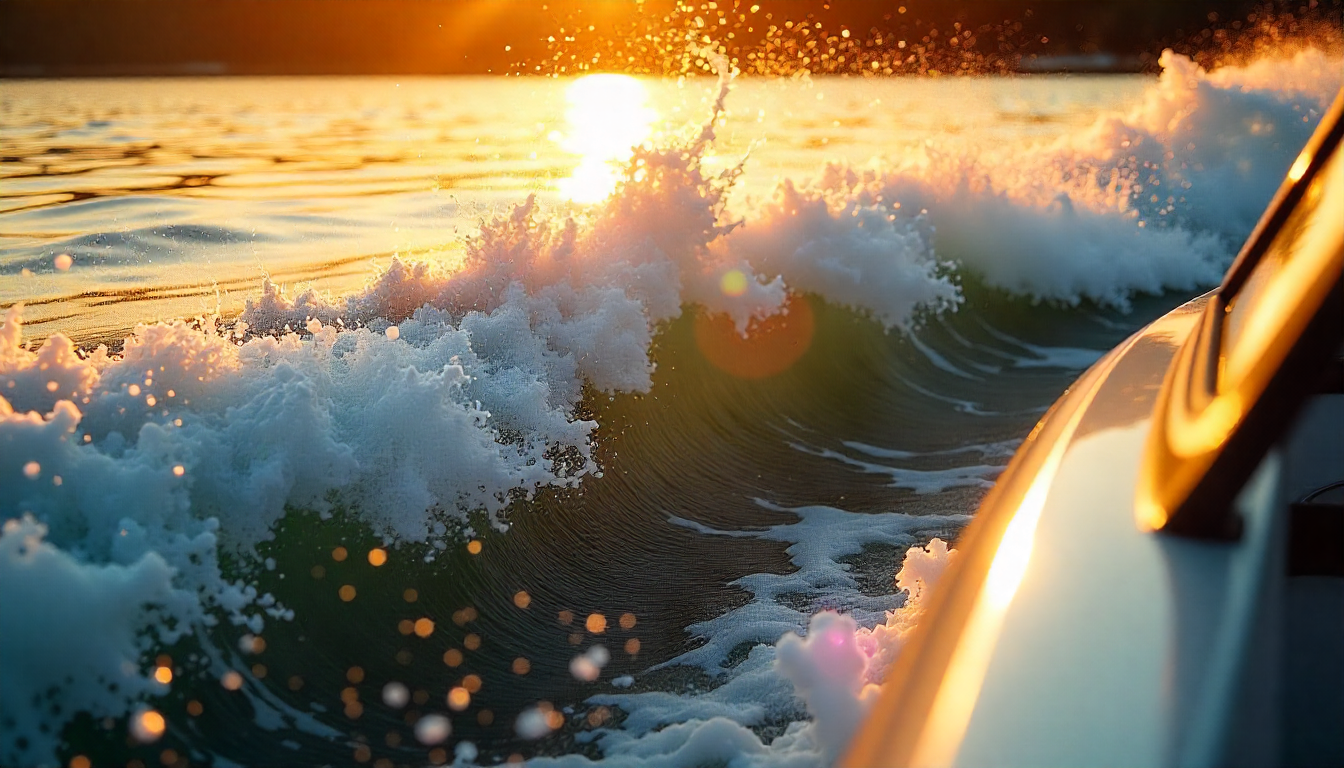Úvod
Wake surfing continues to gain popularity as more travelers look for water sports that combine accessible learning, low-impact movement, and the thrill of riding a wave created by a boat. Unlike traditional surfing, wake surfing removes the need to chase ocean conditions. Riders follow a consistent wave formed by specialized wake boats, allowing them to practice turns, stance control, and balance with predictable rhythm. This reliability appeals to beginners who want to learn quickly and experienced riders seeking refined control.
Travelers interested in wake surfing often wonder what equipment they need, what skills to develop first, and how wake shape affects performance. The goal of this guide is to break down these topics in a practical, structured way, combining safety insights, equipment explanations, and technique tips suitable for calm lake environments or protected water conditions. With the right approach, wake surfing becomes accessible even for those with limited board or water sports experience.
How wake surfing works
The boat-generated wave
The foundation of wake surfing is the boat’s wake, shaped by weight distribution, hull design, and speed. Wake boats are engineered to create a tall, smooth wave with a defined pocket. The ideal wave needs enough height to support a rider without interruptions and enough length to allow movement up and down the face. Boats with ballast systems help create stronger waves by adding controlled weight to the hull.
The driver plays a major role in forming a usable wake. Speed adjustments of even half a mile per hour change the wave’s shape significantly. For beginners, drivers typically maintain slow, steady speeds that keep the wave long and easier to ride. As skill increases, slight modifications help riders achieve sharper turns and more dynamic movement. Understanding these details makes the sport more enjoyable and improves success during practice.
Rider positioning and rope use
Beginners start by holding a rope connected to the boat, which helps them stand, balance, and move toward the wave pocket. The rope should be short enough to put the rider in the correct position but long enough to allow flexibility during the initial moments. A wakesurf board is designed with enough surface area to support riders at slow speeds, giving them more time to adjust their stance and pressure distribution.
As riders progress, they learn to release the rope once they feel the natural pull of the wave. This transition requires balance and awareness of board angle. Proper foot placement is essential; weight shifts on the back foot control speed, while the front foot directs movement toward the boat. These basics form the foundation for more advanced maneuvers.
Equipment overview
The wakesurf board and essential gear
Choosing the right wakesurf board is critical for learning. Larger boards with stable outlines support beginners by helping them maintain control at slow speeds. Advanced riders often choose smaller boards for quicker movement and sharper turns. Materials influence responsiveness; composite boards create faster reactions, while foam-core options feel smoother and more predictable.
Riders should wear proper safety gear, especially life vests designed for water sports. Rope selection also matters, as wakesurf ropes come with shorter sections and handles that prevent snagging. Understanding how each piece contributes to performance makes wake surfing safer and more enjoyable for all experience levels.
Boat setup and wake optimization
A well-configured boat helps riders progress faster. Ballast placement creates the desired wave height and shape, while speed adjustments help smooth the wave face. Many modern boats include devices that shift wake direction, offering left or right surf waves depending on rider preference. These tools allow precise control and consistent performance across different lake conditions.
Before riding, teams should inspect equipment, check rope integrity, and verify that the wave direction matches the rider’s stance. Early attention to setup reduces errors on the water and keeps riders focused on improving technique rather than compensating for poor wake shape.
Learning the fundamentals
Starting position and taking off
Learning to stand properly on the board begins with body alignment. Riders float on their backs, place heels on the board, and keep knees bent. As the boat accelerates slowly, the board rises beneath them. Maintaining a compact posture prevents early falls and helps riders gain stability as they rise above the water. Once standing, the rider shifts weight gradually to reach the wave pocket.
Beginners often struggle with leaning too far back or pulling excessively on the rope. Gentle movements, steady breathing, and balanced posture reduce unnecessary pressure. Early practice sessions should focus on staying relaxed and letting the wave guide the board.
Maintaining balance and controlling speed
Once in the pocket, balance becomes the key skill. Shifting the back foot applies pressure that slows the board and deepens the turn, while pressing slightly forward increases speed. This forward-backward control is essential for staying close to the wave and avoiding nose dives. Lateral shifts allow the rider to carve gently along the wave face, creating smoother, more controlled movement.
Practicing these shifts on calm water helps riders understand how small adjustments affect speed and direction. As skills grow, riders can introduce wider turns and small jumps, expanding their range of motion while staying within the safety limits of wake surfing.
Advancing to more complex techniques
Carving, pumping, and small tricks
Carving involves leaning gently into the wave and guiding the board along curved lines. This movement requires coordination between foot pressure and body orientation. Pumping adds momentum by shifting weight repeatedly up and down the wave face, helping riders generate more speed. These skills make riding more dynamic and pave the way for introductory tricks like floaters or small aerial movements.
To avoid falls, riders should practice in predictable water conditions, preferably on lakes with minimal boat traffic. Understanding wave rhythm helps smooth out transitions and reduces the risk of losing balance. Mastery of these techniques signals strong progress and prepares riders for advanced maneuvers.
Safety awareness and responsible riding
Wake surfing takes place close to the boat, which requires riders to follow safety guidelines at all times. Proper distance, awareness of surroundings, and consistent communication with the boat crew prevent accidents. Riders should avoid surfing behind boats with exposed propellers and choose vessels designed specifically for wake sports. Staying mindful of nearby shores ensures that wave activity does not disturb swimmers or create erosion.
Adhering to safe practices enhances not only personal well-being but also the overall experience for everyone on the water. Responsible riders help maintain enjoyable conditions for future wake surfing sessions.
Záver
Wake surfing blends excitement, technique, and accessibility, making it one of the most appealing modern water sports. By understanding wave formation, equipment choices, and essential skills, riders experience faster progress and more enjoyable sessions. Whether practicing on a calm lake or a dedicated wake surfing zone, consistent technique and thoughtful preparation help both beginners and advanced riders achieve smoother rides and more confident performance.

 Wake surfing">
Wake surfing">
